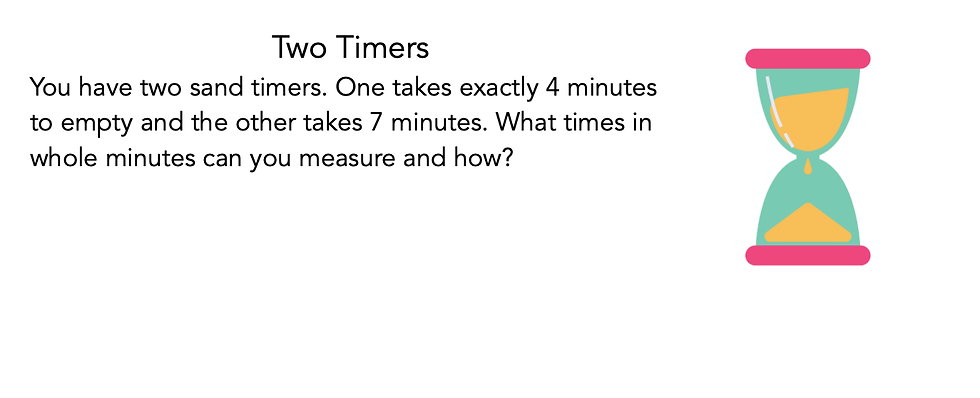Revisiting and Refining Classroom Norms
- Sarah Stecher

- Sep 29, 2023
- 4 min read
Updated: Feb 15
Each year, we work hard to carefully craft those first few days of school and teach our students the norms of our classroom. In the past, I used to teach all the norms in the first week. But what I found was that there were some norms that didn’t really have a place to land without the context of actually working on some math or having taken and reflected on an assessment. While I thought frontloading would prepare us for all scenarios that could happen throughout the year, I realized that some norms could wait to be introduced until a few weeks or even a month into the school year. Now, we use the first week of school to focus on a few key norms related to participation and productive group work. We do this by giving students a non-curricular task (like Lots of Dots) and then having them reflect on the behaviors that helped them be successful on the task and how they could carry that forward throughout the year. Then, we sprinkle in more of these activities throughout the fall to teach some of the more nuanced norms around how students will learn in this class.
Here are a few “second-tier” norms that we introduce later in the year. These are messages that students receive by immersion early on, and then are discussed more explicitly in this second round of norm-setting.
Be aware of when to step up and step back.
This norm is about ensuring equity of voice during group work. Being able to monitor one’s own contributions and make space for others is a sophisticated skill, but one worth learning.
How to Teach It
Using a non-curricular thinking task or an EFFL lesson, give each student in the group two chips or tokens. Once a group member talks they put their chip in the middle of the table. Every group member must use up their two chips, and if someone is out of chips, they can’t speak again until everyone has used up their two chips. Once all the chips are in the middle, the chips are redistributed and the process starts over. This helps students who tend to talk a lot make room for other voices, and encourages quieter students to contribute. Most teams quickly realize that being willing to share even small ideas is helpful and redistributing the chips multiple times during one task allows for a lot of forward motion on the task.
Math is about learning, not performing.
This is a great norm to talk about when you hand back that first unit test. Reminding students that the learning process is iterative and comes with starts and stops is crucial for making sure that students don’t internalize struggle as some kind of sign that they’re not good at math. This mindset tends to lead to avoidant behavior, as students will do almost anything to save face and avoid being seen as “dumb.” Read more about what Jo Boaler has to say on the subject.
How to Teach It
Option 1: Hand back a quiz or test with only diagnostic comments, not points or grades. Allow students to update anything they want to with a different colored writing utensil after discussing the questions with their peers. You can decide whether or not you will still assign a grade to the assessment after this, and if/how you will incorporate their revised work into the grade. This does not have to be done for every single assessment, but setting up the expectation that the learning isn’t over just because they took a test is crucial! We always give students time in class to go over a quiz or test that we hand back to them and make revisions, even though those revisions are not worth a grade! You could have them fill out a test correction form if you wish.
Option 2: Give students a task where the answer isn’t important but the focus is on the various strategies that could be used to answer the question. You could even give them the answer right from the onset, and they have to find strategies for showing it! Number talks are a great way to do this. Or ask students to make and prove a conjecture like in the Hailstone Sequences task. Any open-ended task also works well for this like Making Perfect Rectangles, Two Timers (shown below), or Split 25. We also like to use tasks that require students to justify a decision where there’s not one clear right answer, like Summer Olympics or the Target Holiday Sale (shown below), adapted from Peter Liljedahl’s numeracy tasks.
A Group Work Inventory
Once norms have been established, they need to be revisited often. One great way to do this is to include an occasional group work inventory where groups self-reflect on how well they are adhering to the norms. The inventory is short and focused on objective, measurable behaviors. We do this to emphasize that group work, like any other thing we learn in math class, is a skill that can be learned and improved upon. It’s not an innate talent that some have and others don’t. Make your own copy of this document and revise it however you would like to include the things that are most important to you. Encourage honesty in these reflections. Remind students that their responses are not graded and that simply checking “yes” to every statement is not helpful! Get the Group Work Inventory.





